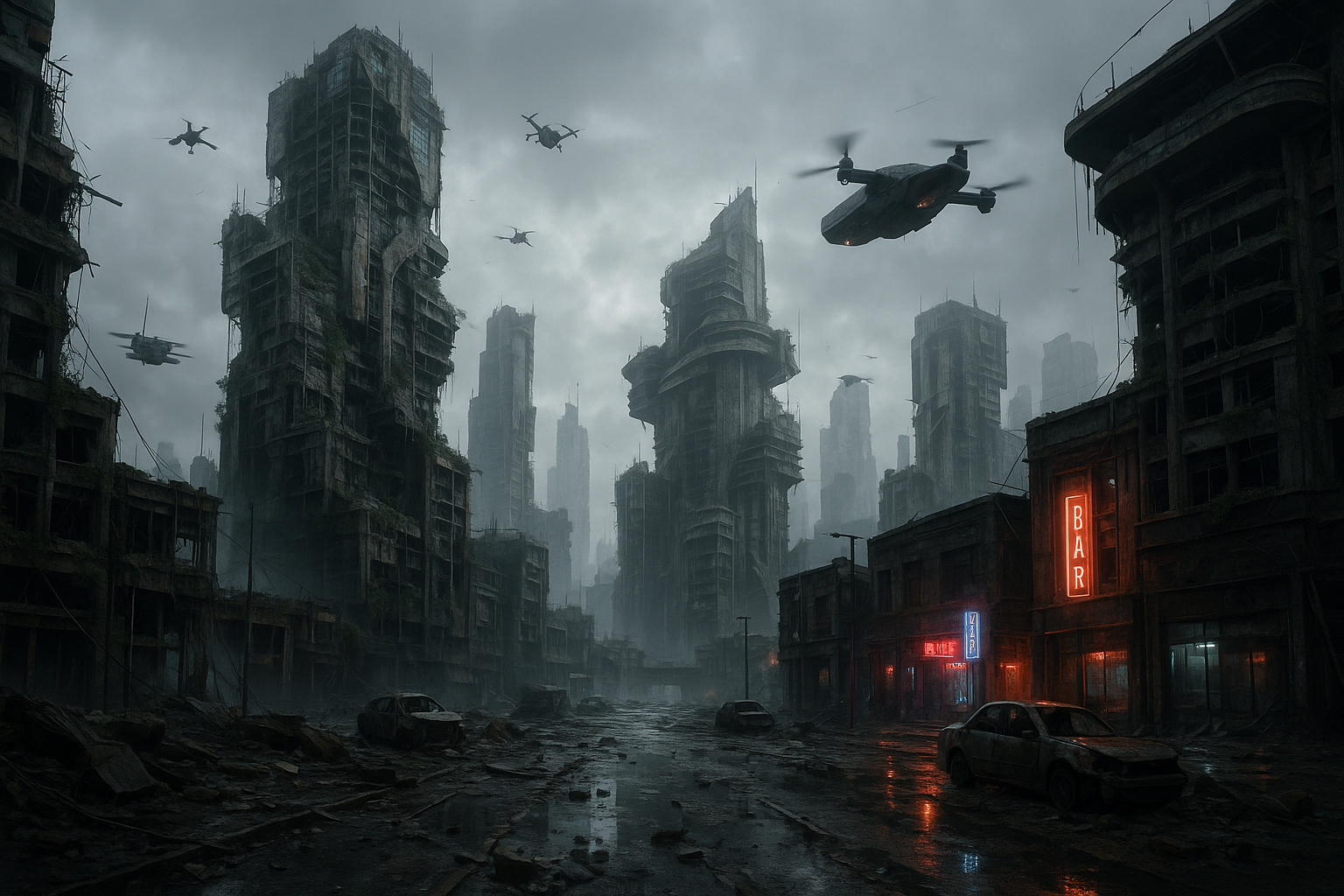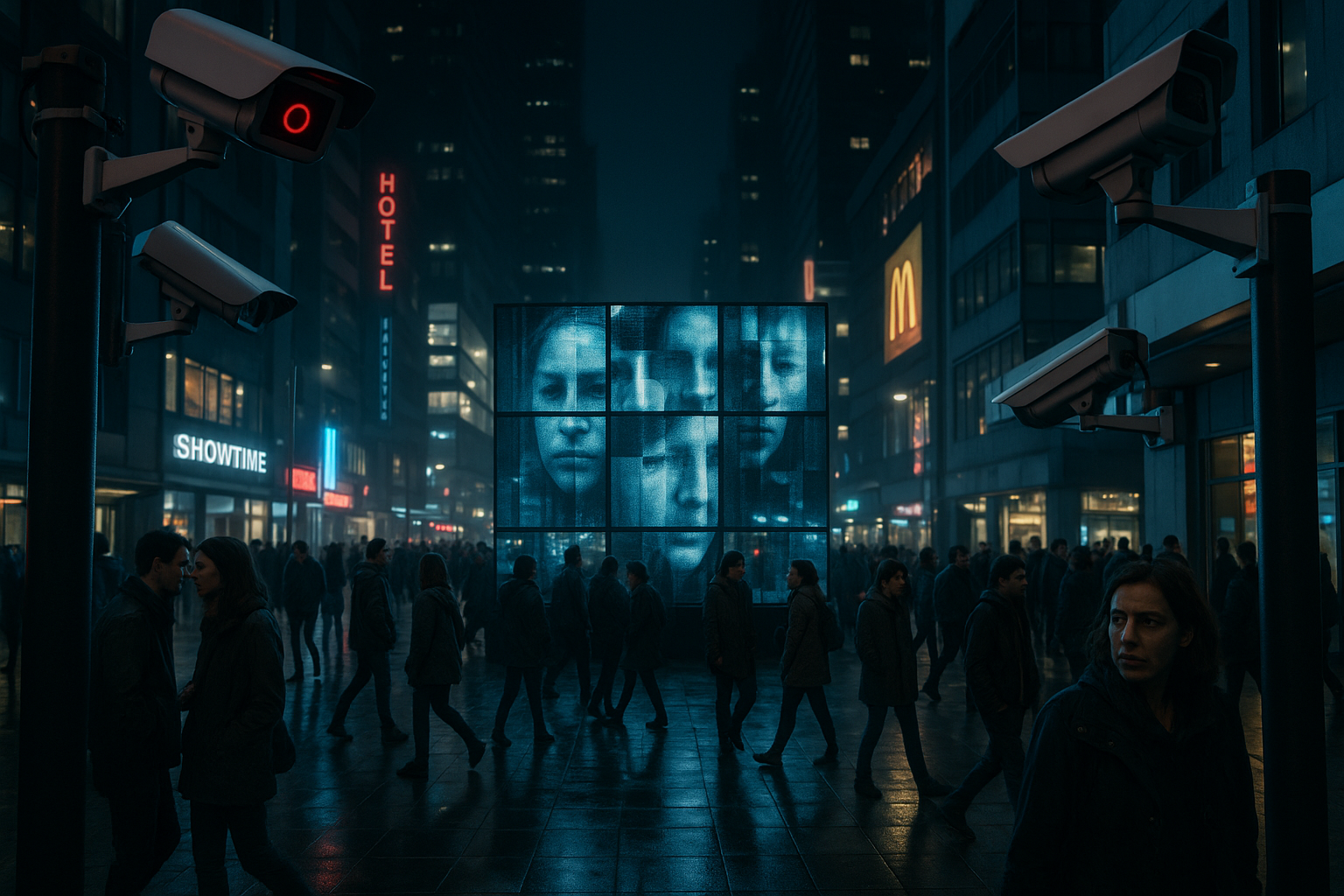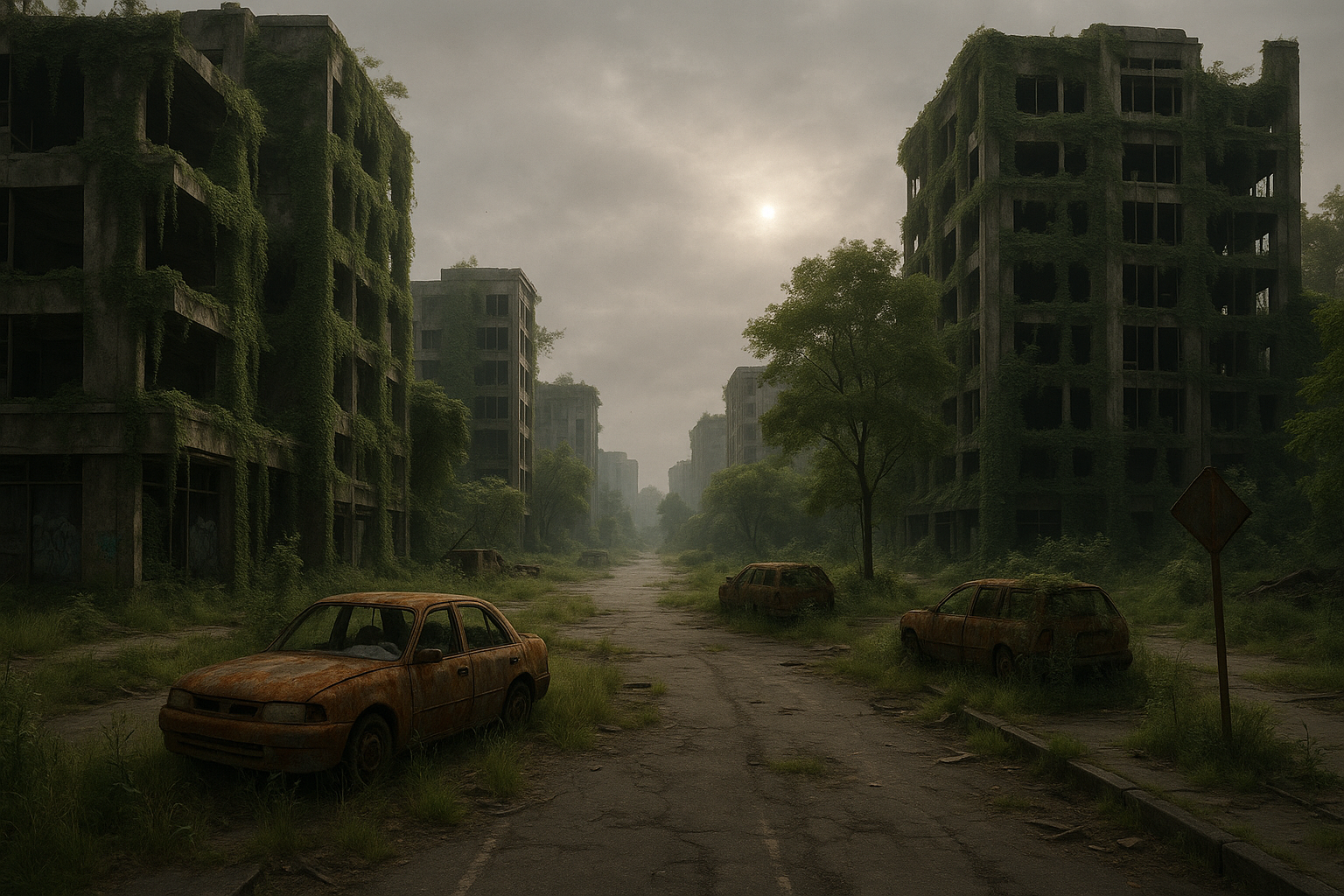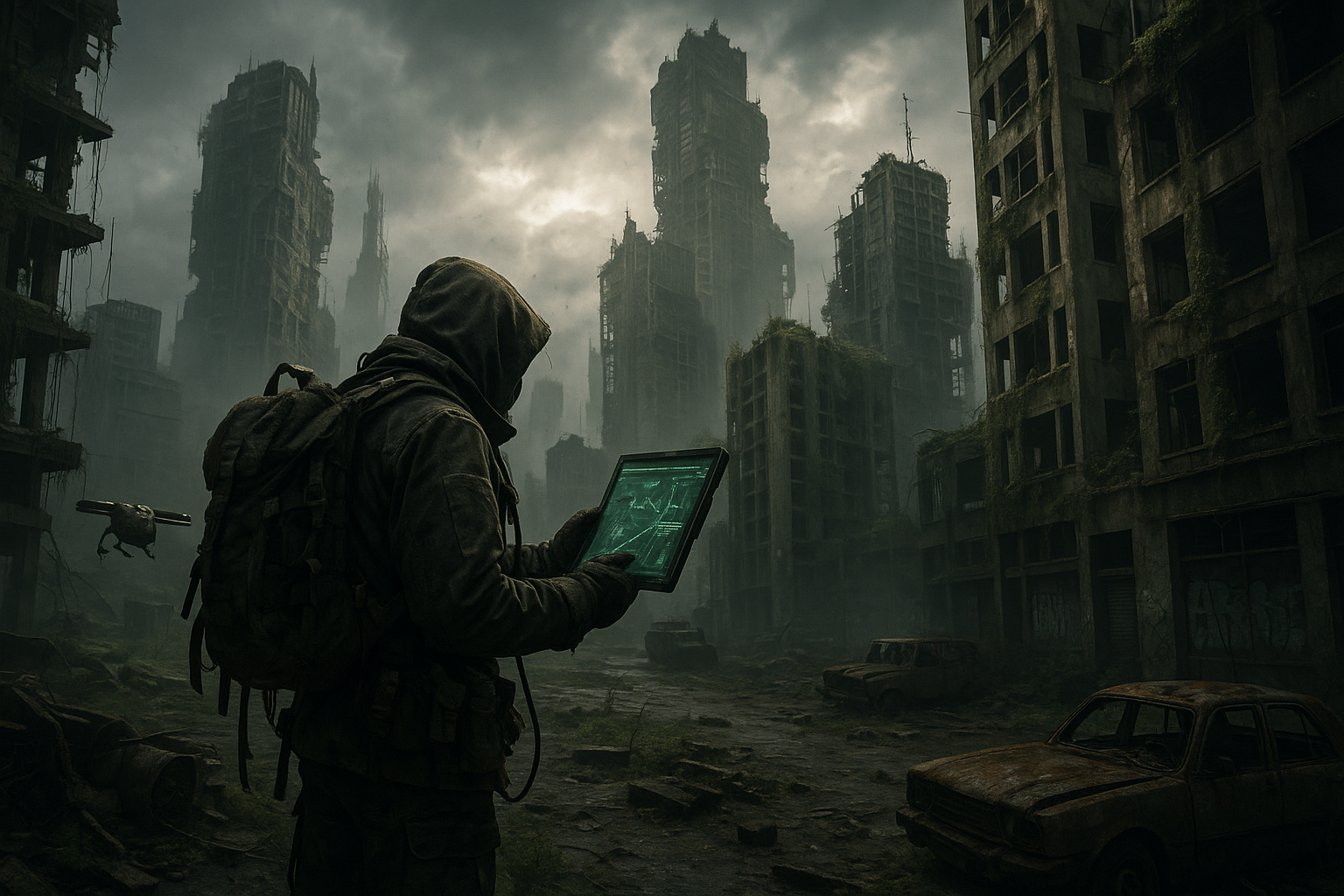Anúncios
In the ever-evolving landscape of fashion, where trends come and go with the seasons, there exists a cinematic universe that continues to captivate and inspire: the dystopian future of “Blade Runner.” Released in 1982, Ridley Scott’s neo-noir masterpiece not only redefined the science fiction genre but also set a precedent for what the future might look like. Its influence extends far beyond the silver screen, seeping into the fabric of our sartorial choices today. The film’s aesthetic, with its hauntingly beautiful juxtaposition of the futuristic and the retro, offers a tantalizing glimpse into the world of wearable art—a realm where imagination knows no bounds and creativity reigns supreme. 🕶️
But what is it about “Blade Runner” that makes it such a perennial source of inspiration in the fashion industry? Perhaps it is the film’s visionary portrayal of a future where the boundaries of technology and humanity blur, resulting in a style that is both forward-thinking and timeless. The movie’s wardrobe, crafted with meticulous attention to detail, features a blend of high fashion and street style, reflecting a society on the brink of technological transcendence. This interplay of elements resonates with designers today, who strive to create pieces that are not only visually stunning but also speak to the zeitgeist of a rapidly changing world.
Anúncios
In this article, we will delve into the iconic style of “Blade Runner” and explore how its visionary aesthetic continues to influence contemporary fashion trends. From the film’s use of bold silhouettes and innovative materials to its exploration of identity and self-expression, we will examine how these elements are being reinterpreted in today’s world of fashion. Additionally, we will discuss the concept of wearable art—a movement that challenges traditional notions of clothing and embraces fashion as a form of personal and artistic expression. By tracing the lineage of these ideas from the film to the runway, we aim to shed light on the enduring legacy of “Blade Runner” in the fashion industry.
Join us on this journey as we navigate the intersection of film, fashion, and technology. We will uncover the ways in which designers draw inspiration from “Blade Runner’s” dystopian vision, transforming it into garments that are not only wearable but also a testament to the power of imagination. Whether you are a fashion aficionado, a film buff, or simply curious about the future of style, this exploration promises to be a captivating adventure into a world where the lines between reality and fiction blur, and where the future of fashion is anything but ordinary. 🚀
Anúncios
The Timeless Appeal of Blade Runner’s Fashion
The film “Blade Runner,” released in 1982, has transcended its status as a cult classic, becoming a cornerstone of futuristic cinema. One of its most enduring legacies is its distinct fashion aesthetic, which continues to resonate in today’s world. At its core, the fashion in “Blade Runner” is a fusion of noir, cyberpunk, and futurism. This blend creates a visually arresting narrative that speaks volumes even without dialogue. The film’s setting—a dystopian future where neon lights juxtapose with gritty urban landscapes—provides the perfect backdrop for its iconic style.
In “Blade Runner,” fashion is not just about clothing; it’s about identity and expression in a world where humanity blurs with artificial intelligence. The costumes, designed by Michael Kaplan and Charles Knode, incorporate elements of 1940s film noir, including sharp silhouettes, trench coats, and fedoras, mixed with punk and avant-garde influences. This intentional clash of eras and styles reflects the film’s themes of memory, identity, and the future. It’s no surprise that this eclectic mix continues to inspire designers, artists, and fashion enthusiasts around the globe.
Today’s fashion industry often looks to the past for inspiration, and “Blade Runner” provides a rich tapestry to draw from. The film’s influence is evident in collections from leading designers such as Raf Simons, Rick Owens, and Alexander McQueen. These designers have embraced the film’s unique aesthetic, creating pieces that embody a sense of rebellion, innovation, and otherworldliness. As we explore the ways in which “Blade Runner” continues to influence contemporary fashion, it becomes clear that this cinematic masterpiece is more relevant than ever.
Breaking Down the Key Elements of Blade Runner’s Style
The fashion in “Blade Runner” can be categorized into several key elements that continue to resonate in today’s fashion landscape. Let’s delve into some of these influential aspects:
- Layering: The use of layers in “Blade Runner” is not just practical, given the film’s rainy, urban setting, but also symbolic. Layering reflects the complex identities and hidden depths of the characters. This element has found its way into modern streetwear and high fashion, where layered looks offer versatility and depth.
- Material and Texture: The film’s costumes utilize a mix of materials such as leather, wool, and metallics, creating a tactile experience that is both futuristic and grounded. Designers today continue to experiment with materials, pushing the boundaries of texture and form.
- Color Palette: The muted, earthy tones contrasted with pops of neon in “Blade Runner” have influenced modern color schemes, especially in urban and techwear fashion. These colors evoke a sense of both nostalgia and futurism, appealing to a wide range of audiences.
Blade Runner’s Influence on Modern Fashion Designers
Many contemporary designers have openly acknowledged the influence of “Blade Runner” on their work. This influence manifests in various forms, from direct homage to subtle inspiration. The film’s impact is particularly evident in the collections of avant-garde and high-fashion designers who seek to push the boundaries of conventional style.
Raf Simons, known for his minimalist yet thought-provoking designs, has drawn inspiration from the film’s utilitarian and dystopian aesthetic. Simons’ collections often feature sharp tailoring, dark color palettes, and an emphasis on silhouette, reflecting the film’s influence. His work embodies a blend of past, present, and future, echoing the timeless quality of “Blade Runner.”
Similarly, Rick Owens, a designer celebrated for his avant-garde approach, incorporates elements reminiscent of “Blade Runner” in his collections. Owens’ use of draping, layering, and unconventional materials aligns with the film’s aesthetic, creating a futuristic yet accessible style. His designs often challenge traditional norms, much like the film itself, inviting viewers to question and redefine their perceptions of fashion.
Alexander McQueen, another visionary in the fashion industry, was known for his dramatic and theatrical designs. His collections frequently showcased elements of fantasy and dystopia, drawing parallels with the world of “Blade Runner.” McQueen’s ability to blend beauty with darkness reflects the film’s complex narrative, making his work timeless and captivating.
| Designer | Blade Runner Influence |
|---|---|
| Raf Simons | Utilitarian aesthetic, sharp tailoring |
| Rick Owens | Layering, draping, unconventional materials |
| Alexander McQueen | Theatrical designs, dystopian elements |
These designers and others have not only embraced the visual aspects of “Blade Runner” but also its thematic depth. Their work continues to challenge the status quo, encouraging audiences to explore new possibilities in fashion. As we move forward, the legacy of “Blade Runner” will undoubtedly continue to inspire creativity and innovation.
Blade Runner’s Impact on Streetwear and Everyday Fashion
While high fashion often garners attention for its dramatic flair, “Blade Runner” has also made significant inroads into streetwear and everyday fashion. The film’s influence is evident in the rise of techwear—a style that emphasizes functionality, innovation, and a futuristic aesthetic. Techwear incorporates many of the elements seen in “Blade Runner,” such as layering, utilitarian designs, and the use of technical fabrics.
Streetwear brands like ACRONYM, Y-3, and Off-White have embraced this futuristic aesthetic, creating collections that resonate with fans of the film. These brands prioritize both form and function, offering pieces that are not only stylish but also practical for everyday wear. The integration of technology into fashion, such as weather-resistant materials and multifunctional garments, reflects the film’s vision of a future where technology seamlessly integrates with daily life.
The impact of “Blade Runner” on streetwear extends beyond clothing to accessories and footwear. Sneakers with innovative designs, such as the Nike Air Mag, draw inspiration from the film’s futuristic vision. These pieces not only serve as fashion statements but also pay homage to the film’s legacy. The influence of “Blade Runner” on streetwear demonstrates the film’s ability to transcend cultural boundaries, appealing to a diverse audience that values both style and substance.
The Role of Technology in Future Fashion
As we look toward the future, the intersection of fashion and technology becomes increasingly relevant. “Blade Runner” envisioned a world where technology plays a central role in shaping identity and style, a concept that is becoming reality today. The integration of wearable technology, smart fabrics, and digital design tools is transforming the fashion industry, offering new possibilities for creativity and expression.
Wearable technology, such as smartwatches and augmented reality glasses, is becoming an integral part of modern fashion. These devices not only serve functional purposes but also contribute to personal style. Designers are exploring new ways to incorporate technology into clothing, creating garments that are both innovative and visually appealing. The potential for customization and personalization through technology allows consumers to express their individuality in ways that were previously unimaginable.
In addition to wearable technology, the use of digital design tools is revolutionizing the fashion industry. Virtual reality and 3D modeling allow designers to experiment with new ideas and concepts without the limitations of traditional methods. This digital approach to fashion design aligns with the futuristic vision of “Blade Runner,” offering endless possibilities for creativity and innovation.
The rise of sustainable fashion is another area where technology plays a crucial role. Advances in fabric technology, such as the development of biodegradable materials and environmentally friendly production processes, align with the growing demand for sustainable fashion. These innovations reflect the film’s exploration of the relationship between humanity and technology, emphasizing the need for a harmonious coexistence.
As we continue to explore the potential of technology in fashion, the legacy of “Blade Runner” serves as a guiding light, inspiring designers and consumers to imagine a future where style and innovation coexist harmoniously. The film’s influence on the fashion industry is a testament to its enduring impact, offering a vision of the future that is both inspiring and attainable.
For a deeper dive into the impact of “Blade Runner” on fashion, check out this insightful video: Blade Runner’s Influence on Modern Fashion by Wisecrack. 🎥
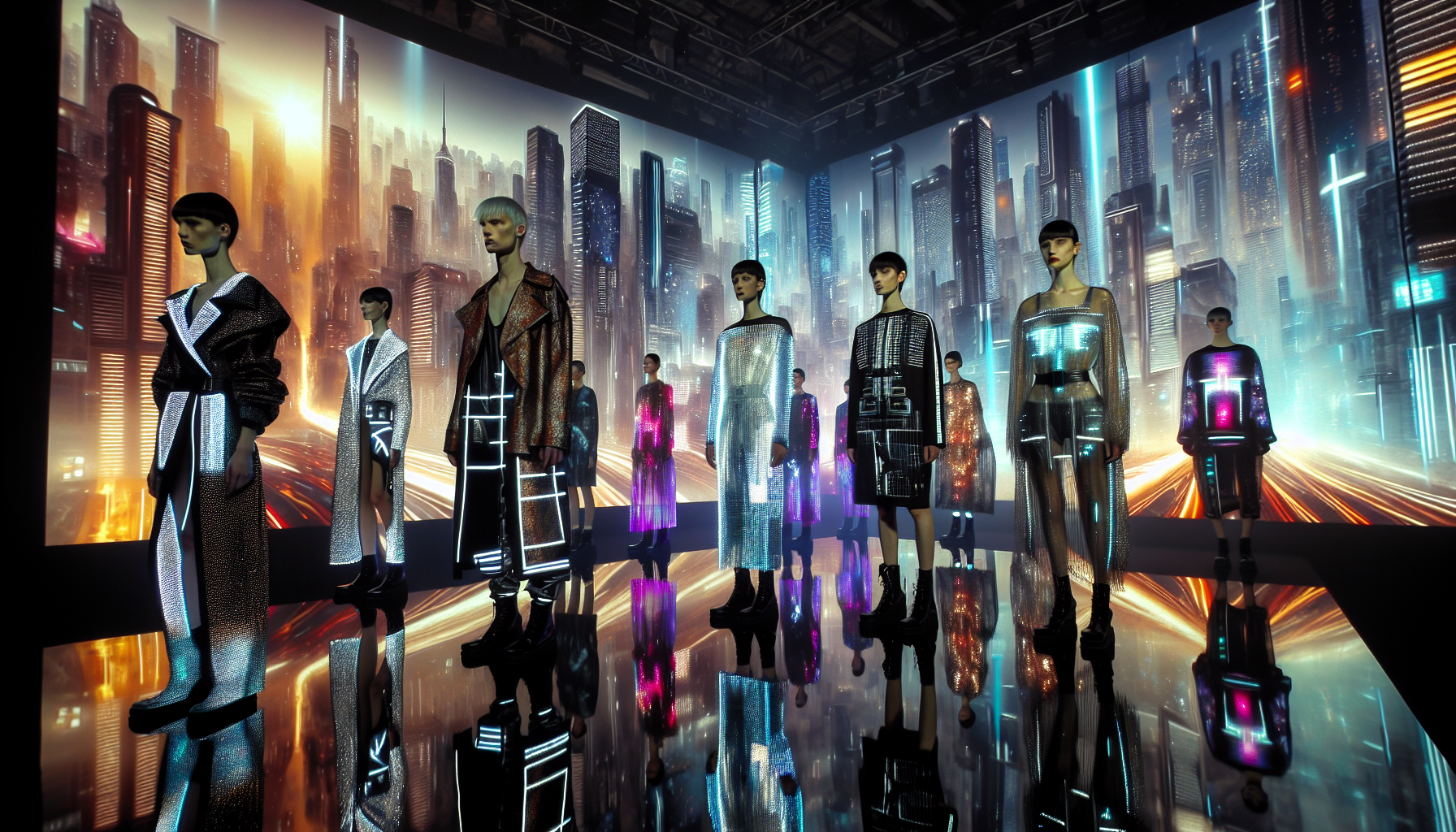
Conclusion
The exploration of fashion through the lens of iconic cinematic masterpieces like *Blade Runner* provides a fascinating glimpse into how art and culture continuously influence and redefine one another. As we have discussed, the dystopian, yet visually captivating world of *Blade Runner* has left an indelible mark on the fashion industry, serving as a perpetual source of inspiration for designers and artists alike. The film’s futuristic aesthetics, characterized by a blend of neo-noir and cyberpunk elements, have seamlessly woven themselves into the fabric of modern wearable art, influencing trends in a multitude of ways.
One of the most significant takeaways from our discussion is the timeless nature of *Blade Runner*’s style. Despite being released in 1982, the film’s aesthetic vision of the future continues to resonate with today’s designers, who incorporate its elements to create bold, innovative fashion statements. This is evident in the structured silhouettes, high collars, and the fusion of textures and materials seen in contemporary collections. Such designs not only echo the film’s stylistic choices but also push the boundaries of conventional fashion, encouraging a dialogue between the past, present, and future.
Moreover, *Blade Runner*’s influence extends beyond mere clothing. The film’s approach to fashion as an integral part of world-building emphasizes the role of garments in storytelling and identity creation. This narrative function of fashion is increasingly embraced by designers today, who view their collections as more than just apparel but as vehicles for conveying complex themes and emotions. This trend underscores the importance of fashion as a form of self-expression and cultural commentary, where every piece can tell a story or provoke thought.
Additionally, the rise of technology in fashion, such as wearable tech and sustainable materials, mirrors the film’s futuristic vision. Designers are now embracing innovations like 3D printing, smart fabrics, and eco-friendly materials to create garments that are not only stylish but also functional and environmentally conscious. This synergy between fashion and technology reflects a growing awareness and responsibility towards our planet, aligning with the film’s themes of humanity and environmental degradation.
In conclusion, the continued relevance of *Blade Runner*’s iconic style in today’s world of wearable art speaks volumes about the power of visionary storytelling and its ability to transcend time. This enduring influence invites us to reflect on the interconnectedness of art, culture, and technology, urging us to embrace creativity and innovation in our own lives. As we move forward, let us draw inspiration from these cinematic visions, using them as a catalyst to explore new horizons in fashion and beyond.
I encourage you, dear reader, to share your thoughts on how *Blade Runner* has influenced your perception of fashion. Do you see its impact in your daily wardrobe, or perhaps in the broader trends around you? Let’s continue the conversation and explore how we can incorporate these visionary elements into our personal and professional spheres. Feel free to share this article with others who are passionate about the intersection of film and fashion, and let’s inspire a new generation of creators to dream big and think boldly.
For further reading and exploration, consider delving into sources like [Vogue](https://www.vogue.com) and [The Fashion Spot](https://www.thefashionspot.com) for current fashion trends, and [MoMA](https://www.moma.org) for insights into the intersection of film and art. Together, let us keep the spirit of *Blade Runner* alive, celebrating the fusion of past and future in the dynamic world of fashion. 🌟
Toni Santos is a visual storyteller and artisan whose work reimagines fashion in the aftermath of civilization. Exploring the aesthetics of survival, decay, and resilience, Toni crafts wearable narratives shaped by a post-human world — where utility meets myth, and remnants become ritual.
Drawn to the raw beauty of collapse and adaptation, Toni’s creations emerge from imagined futures and forgotten pasts. Torn fabrics, corroded metals, and salvaged textures form the foundation of a style that speaks not just to what is worn — but to what has endured. Each piece tells a story of transformation, of identity reshaped by ruins and time.
Through garments, accessories, and visual compositions, Toni constructs a language of dress where fashion is not decoration but declaration — a symbol of survival, memory, and the human spirit persisting in desolation. With a background in visual design and handcrafted techniques, Toni blends precision with provocation. His works are tactile philosophies, designed to be worn, felt, and remembered.
As the creative voice behind Vizevex, Toni shares a vision of fashion as post-civilization mythology — offering curated collections and visual essays that explore the line between relic and garment, artifact and identity.
His work is a tribute to:
The resilience encoded in fabric and form
The symbolic armor we craft in the face of extinction
The beauty found in fragmentation, rust, and reassembly
Whether you are an artist, a futurist, or someone drawn to the aesthetics of survival and reinvention, Toni invites you into a world where fashion becomes memory — one stitch, one scar, one future at a time.


